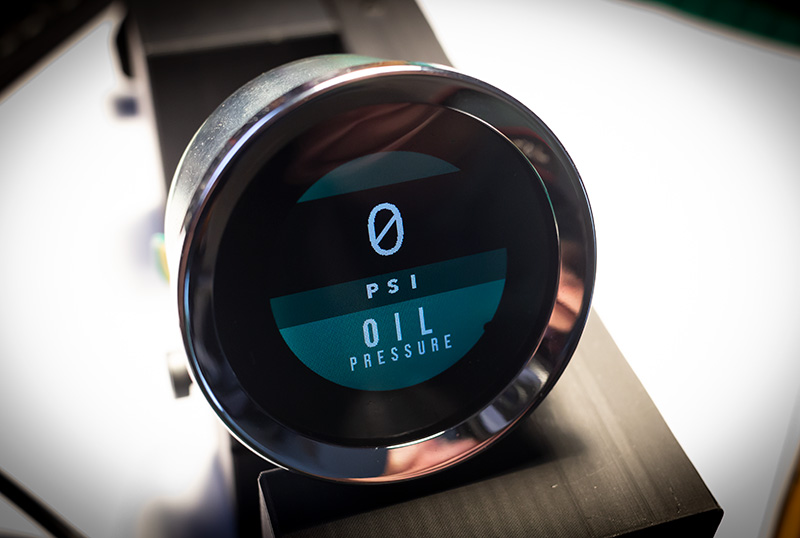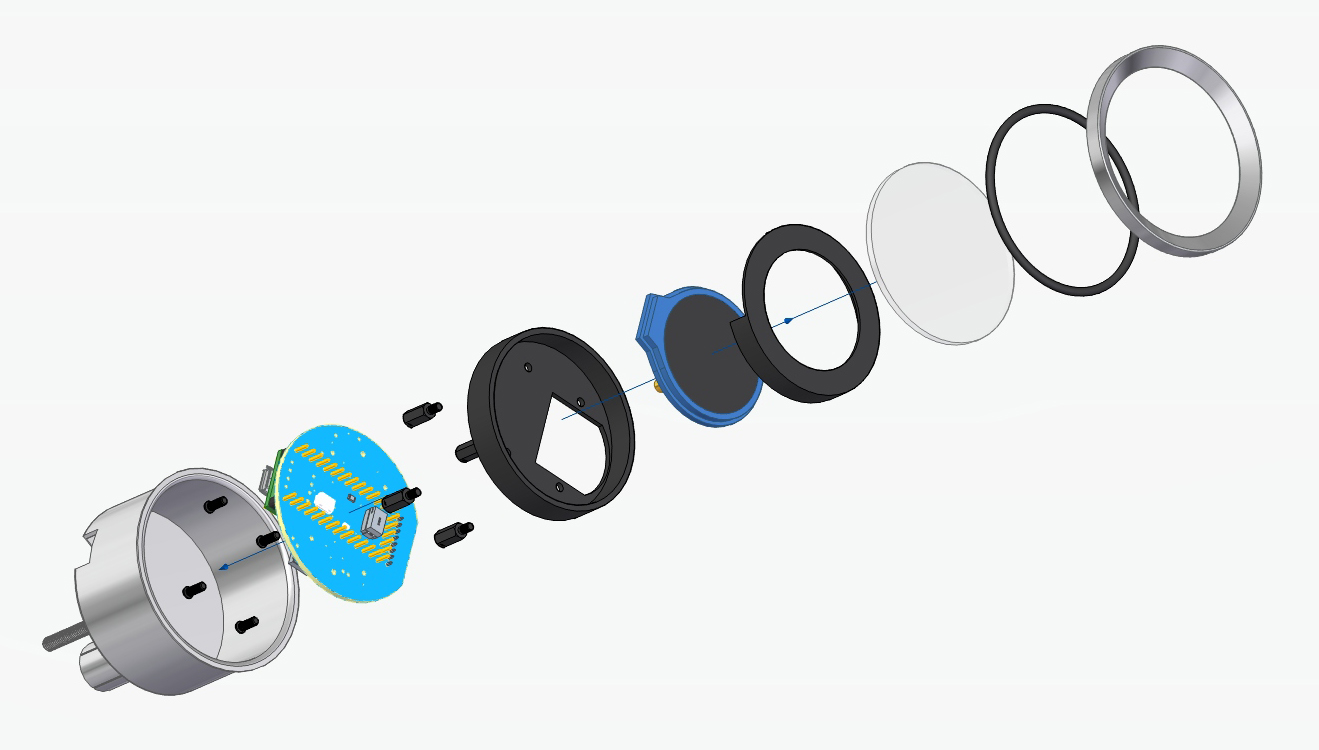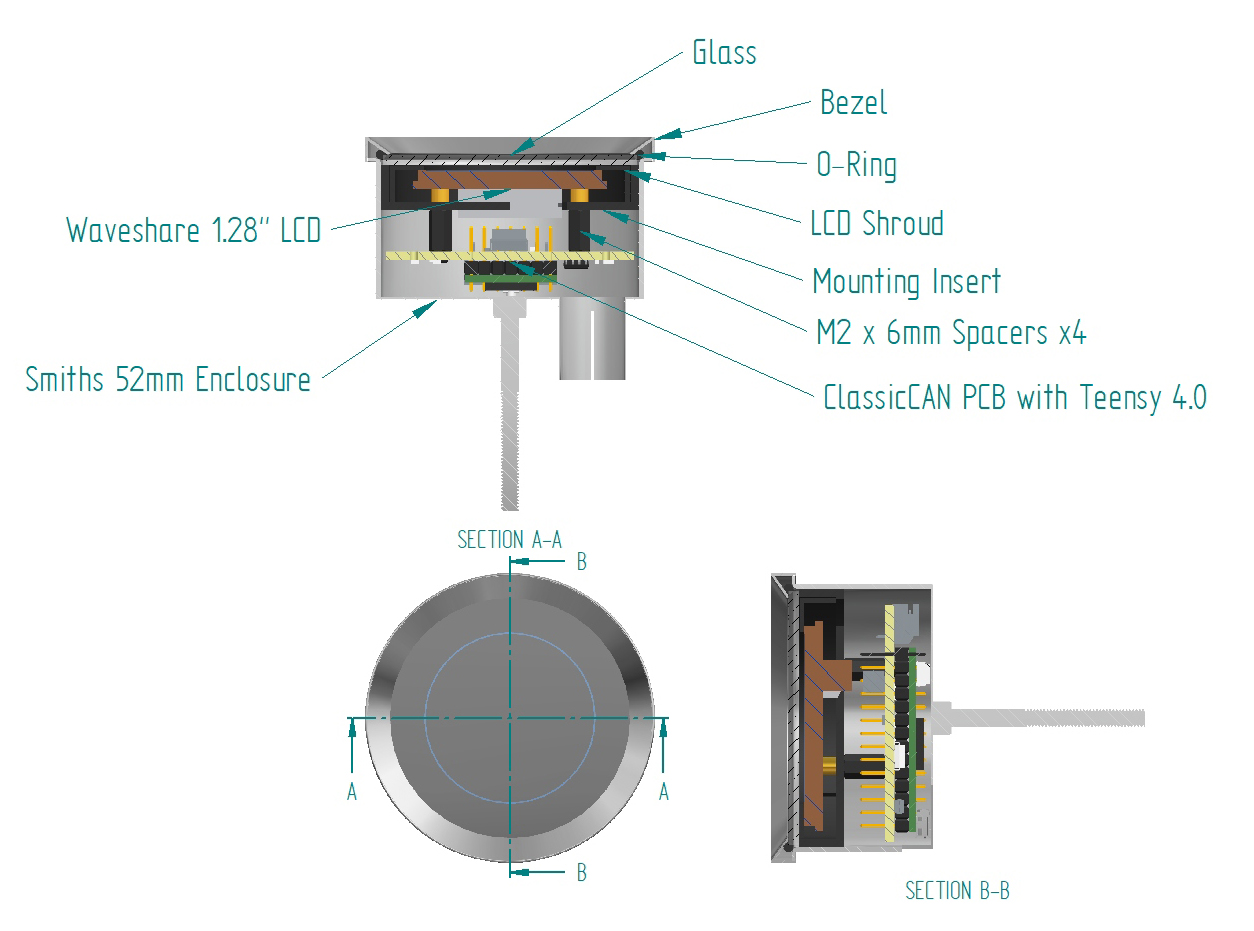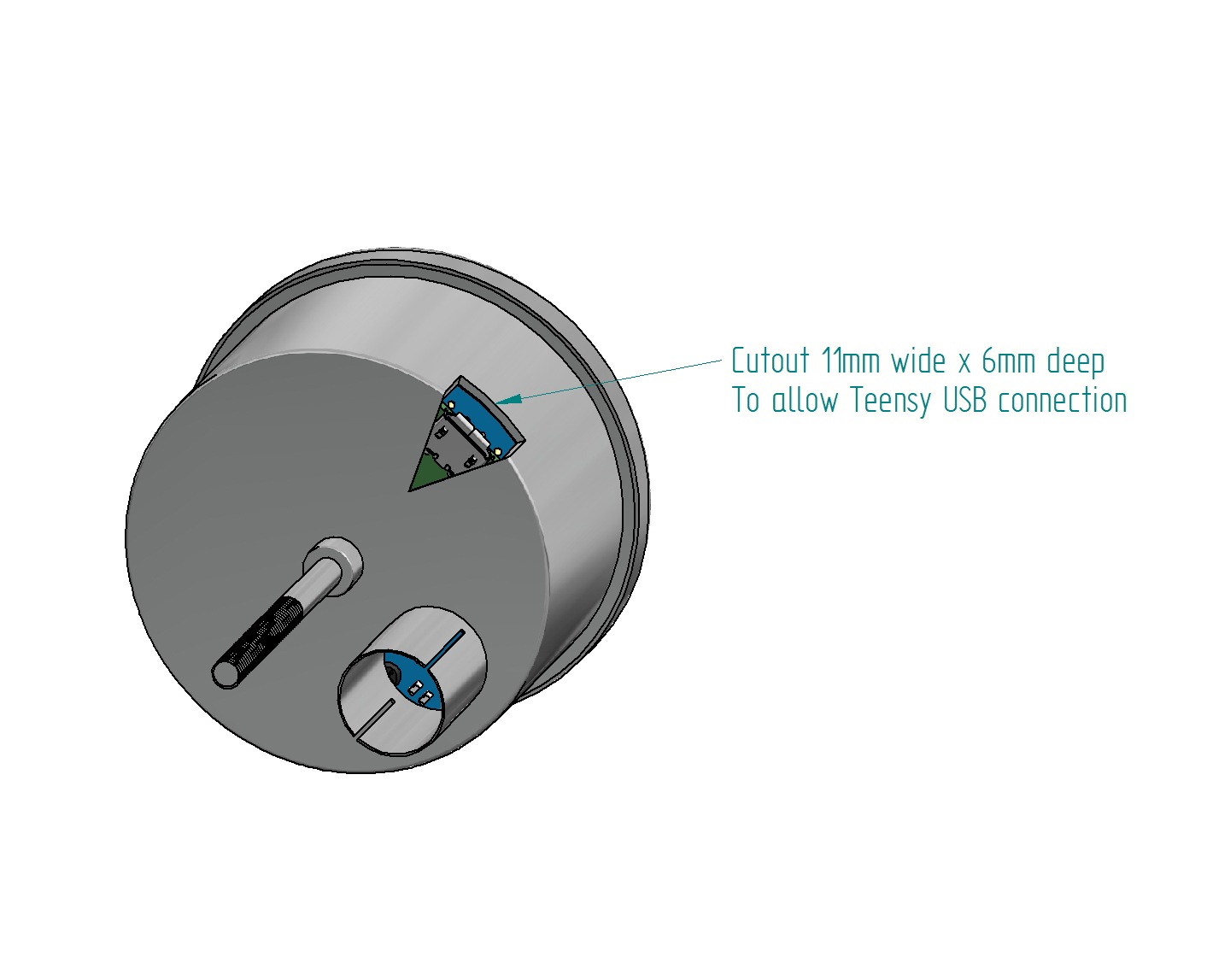
ClassicCAN is an open-source display interface that is compatible with the OBD II protocol and fits inside a classic Smiths Instruments 2" gauge.
¶ Specifications
The PCB measures 48mm in diameter and is designed to fit inside a typical Smiths Instruments 2" gauge. It has mounting holes that accept a Waveshare 1.28" round LCD, a touch electrode PCB and holes that mount the whole assembly into the gauge concentrically.
Features:
- Low profile components
- 240 x 240 circular OLED LCD
- Teensy 4.0 microcontroller support
- Permanent 12V supply for RTC/timekeeping
- CAN interface supporting the OBD II standard
- Capacitive touch navigation
- Bluetooth configuration and data streaming
¶ General Assembly
ClassiCAN can be used with these 3D printable parts that help to assemble everything. See the drawings and attachments below.



3D printable files for "Mounting Insert" and "LCD Shroud" are here and here, respectively.
¶ PCB Assembly
Most of the components on the PCB are SMD, 0603 size. While these are very small, they are still manageable for DIY assembly. There are hundreds of videos online showing various techniques. Alternatively, boards can be ordered populated with surface mount components provided the BOM and pick and place files are correct. JLC PCB offers this service at very reasonable prices and ships to most countries.
Due to the sensitive components used for ClassicCAN, such as the Bluetooth module, a maximum reflow temperature of 250°C should be observed.
¶ Power Supply
Two power supplies are present on the board. 5V supplies the MCU and is connected to a switched 12V supply. 3.3V is connected to a permanent 12V supply and keeps the RTC alive for timekeeping purposes. The rest of the peripherals onboard are supplied by a switched 3.3V supply controlled by the MCU.
¶ Connections
| Pin | Function |
|---|---|
| CANH | CAN bus high signal |
| CANL | CAN bus low signal |
| 12V | Permanent 12V supply |
| SW 12V | Switched 12V supply |
| GND | Ground |
| ANT | Bluetooth antenna |
| TCH | Capacitive touch electrode |
¶ Capacitive touch
The capacitive touch interface IC is an AT42QT1010 which can be configured for proximity or touch. The gauge body itself can be used as an electrode. However, if the gauge is mounted in a conductive material, using the enclosure and bezel as a touch interface can become problematic. In this case, configuring the sensitivity for proximity and using an electrode mounted inside the enclosure is a preferred option. A separate PCB that fits inside the gauge with an electrode is available as part of this project to allow proximity sensing. Sensitivity can be fine-tuned by changing the values of C11 and C12.
Details of adjusting the touch sensitivity can be found in the AT42QT1010 data sheet.
¶ Configuration
Display options and units will be configurable via Bluetooth using the mobile app (in development).
¶ Bluetooth Module
The PCB footprint accepts a Microchip RN4871U-V due to the compact size and external antenna connection. This behaves as a transparent UART to the MCU but can be programmed to change the name, baud rate, or set the PIN code, etc.
Details of programming the Bluetooth module can be found in the User Guide.
¶ Antenna & Signal
The Bluetooth antenna pad should be connected to an external antenna to improve the signal. If using the gauge enclosure as a capacitive touch interface, ensure that it isn't grounded and keep the shielding of the Bluetooth antenna isolated from it.
¶ Firmware
Source code can be found here.
¶ Licensing & Open Source
ClassicCAN is open source and has been developed with DIY enthusiasts in mind.
ClassicCAN by Joe Mann is licensed under CC BY-NC-SA 4.0